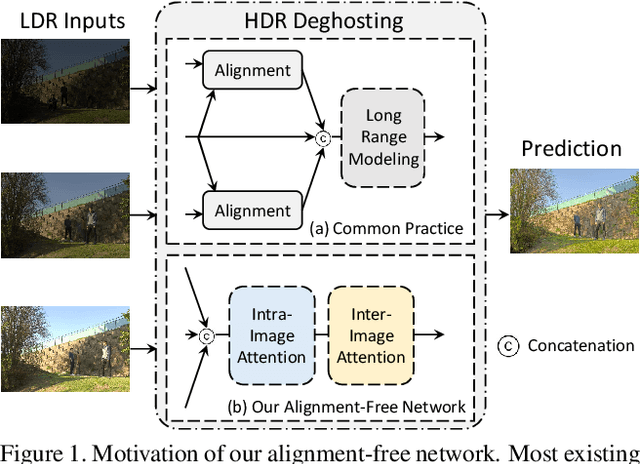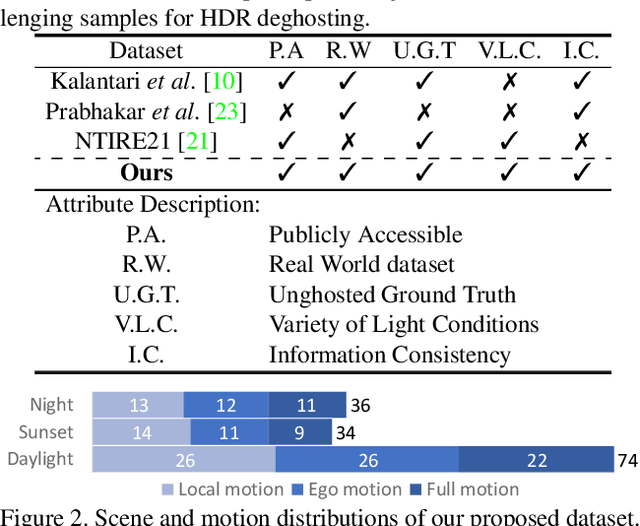Barthélémy Heyrman
Alignment-free HDR Deghosting with Semantics Consistent Transformer
May 29, 2023



Abstract:High dynamic range (HDR) imaging aims to retrieve information from multiple low-dynamic range inputs to generate realistic output. The essence is to leverage the contextual information, including both dynamic and static semantics, for better image generation. Existing methods often focus on the spatial misalignment across input frames caused by the foreground and/or camera motion. However, there is no research on jointly leveraging the dynamic and static context in a simultaneous manner. To delve into this problem, we propose a novel alignment-free network with a Semantics Consistent Transformer (SCTNet) with both spatial and channel attention modules in the network. The spatial attention aims to deal with the intra-image correlation to model the dynamic motion, while the channel attention enables the inter-image intertwining to enhance the semantic consistency across frames. Aside from this, we introduce a novel realistic HDR dataset with more variations in foreground objects, environmental factors, and larger motions. Extensive comparisons on both conventional datasets and ours validate the effectiveness of our method, achieving the best trade-off on the performance and the computational cost.
CEN-HDR: Computationally Efficient neural Network for real-time High Dynamic Range imaging
Feb 10, 2023Abstract:High dynamic range (HDR) imaging is still a challenging task in modern digital photography. Recent research proposes solutions that provide high-quality acquisition but at the cost of a very large number of operations and a slow inference time that prevent the implementation of these solutions on lightweight real-time systems. In this paper, we propose CEN-HDR, a new computationally efficient neural network by providing a novel architecture based on a light attention mechanism and sub-pixel convolution operations for real-time HDR imaging. We also provide an efficient training scheme by applying network compression using knowledge distillation. We performed extensive qualitative and quantitative comparisons to show that our approach produces competitive results in image quality while being faster than state-of-the-art solutions, allowing it to be practically deployed under real-time constraints. Experimental results show our method obtains a score of 43.04 mu-PSNR on the Kalantari2017 dataset with a framerate of 33 FPS using a Macbook M1 NPU.
 Add to Chrome
Add to Chrome Add to Firefox
Add to Firefox Add to Edge
Add to Edge